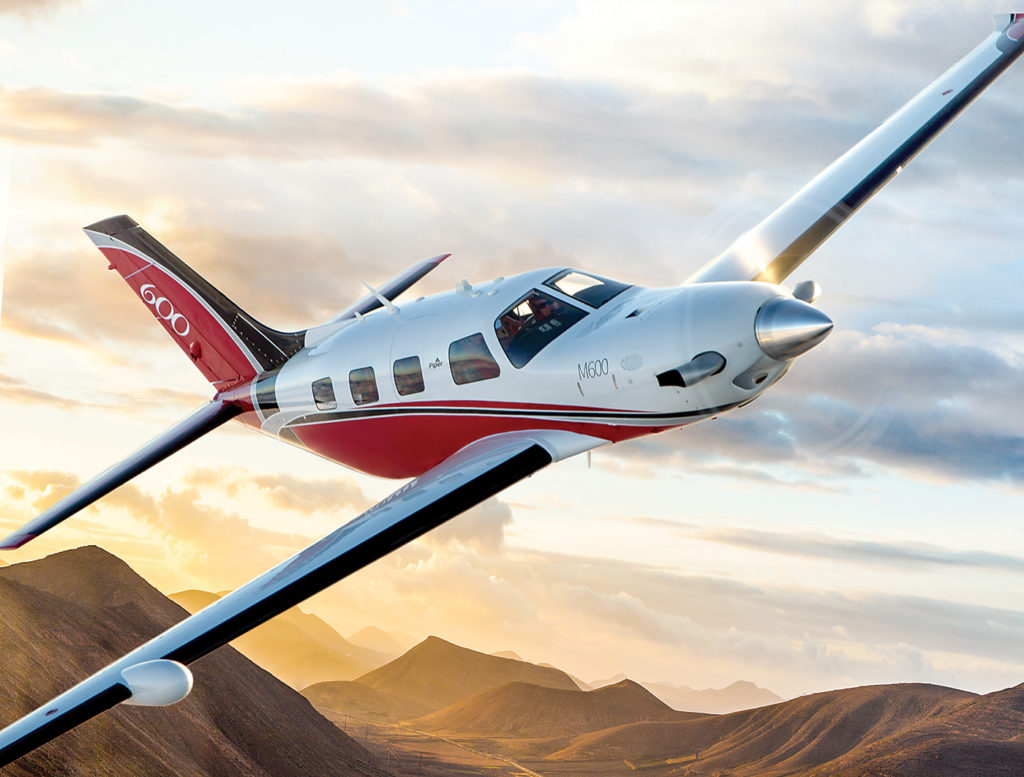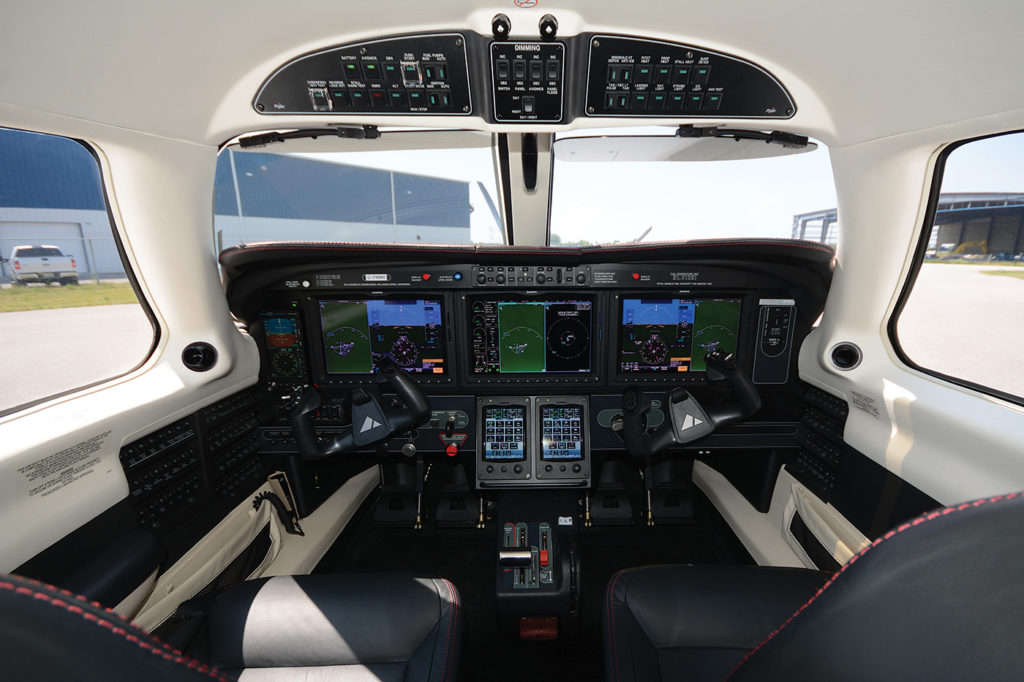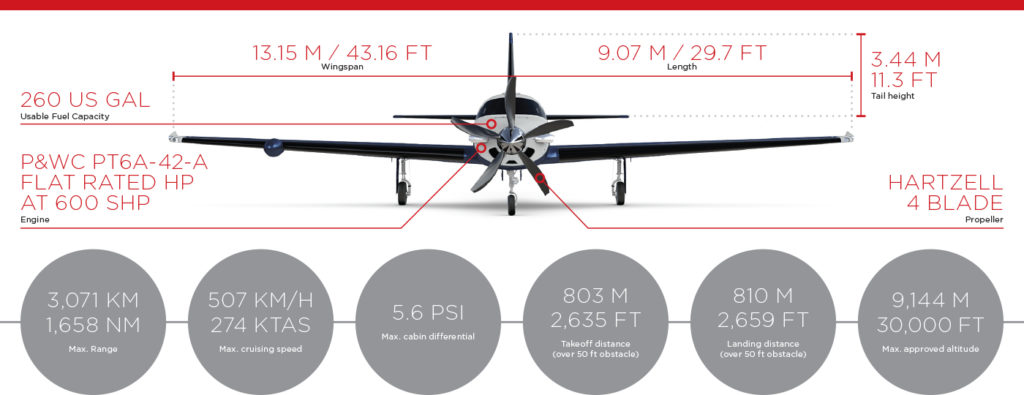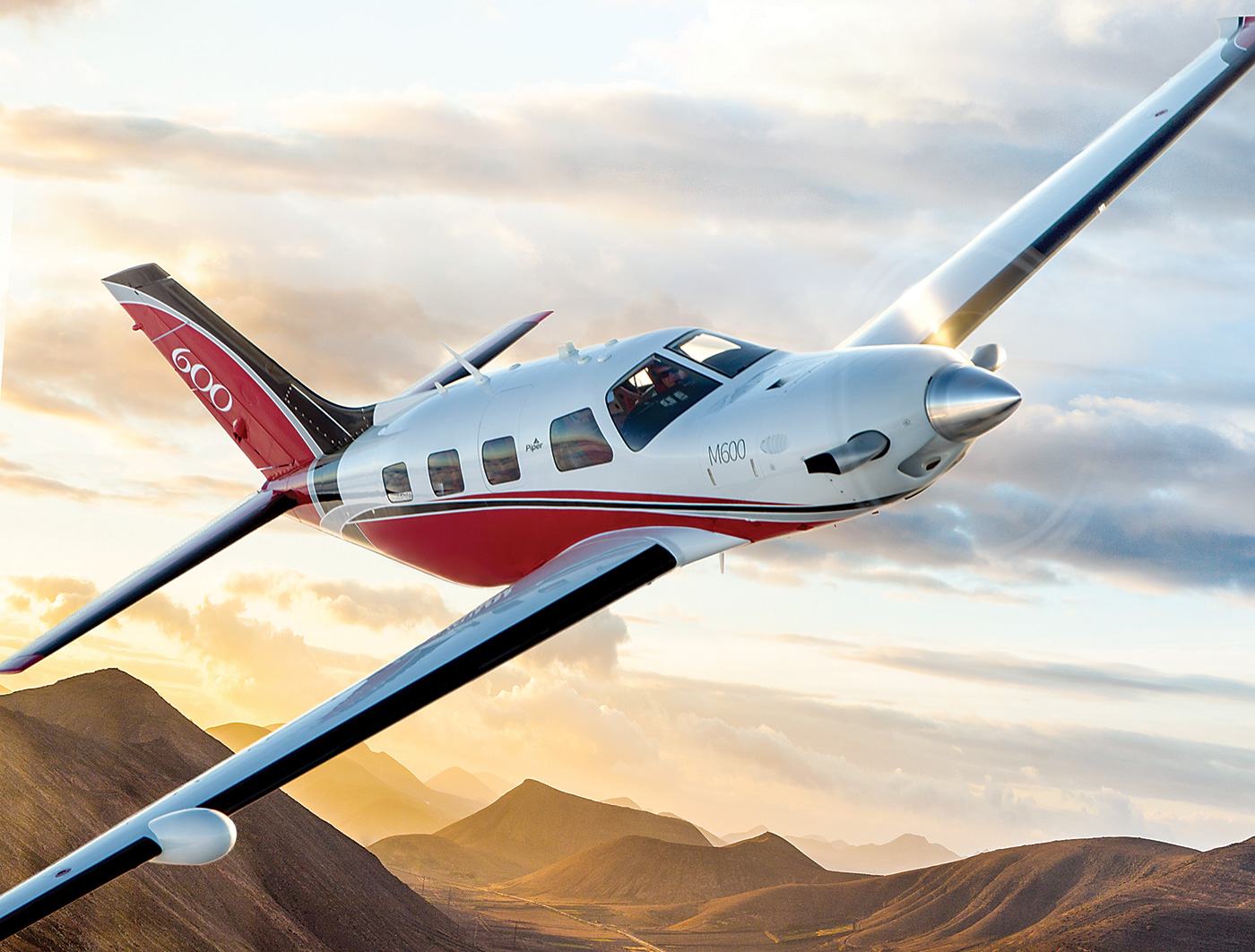Estimated reading time 11 minutes, seconds.
We are often inundated with claims that a product is “new and improved,” while it is obvious that the product in question is neither very “new” nor very much “improved.”

Not so after the Piper M600. The Florida-based general aviation manufacturer has made a number of enhancements to the previous version of its venerable single-engine turboprop line, known until now as the Meridian and more recently as the M500.
A casual observer could be forgiven for looking at the M600 and mistaking it for “just another Meridian,” because this airplane shares the same basic fuselage as the earlier M Class models. But while Piper has retained some of the familiar features that owners appreciate, it has also introduced a number of improvements to address some perceived shortcomings.
So, what’s different on the outside of the airplane? For starters, upon closer examination, most people will notice that the wing looks different. It’s thicker, stronger looking and aerodynamically cleaner. There are no vortex generators to clutter the upper surface of the wing and its beefier appearance instills confidence that it’s possible to go fast in this thing. (Spoiler alert: You can!)
Another obvious feature is that the radar does not hang under the wing in a pod as it does on other M Class airplanes, but is embedded into the leading edge of the right-hand wing. Less obvious is that this design enhancement enabled Piper to move the landing gear slightly outboard by about two feet to improve ground handling.
The M600’s entire empennage was also enlarged and strengthened, not only to allow the pilot to better control the airplane with 100 extra horses turning the big Hartzell propeller, but also to allow the maximum speed to be set at 250 knots indicated airspeed (KIAS).
It should be noted that the maximum speed for the Meridian/M500 aircraft is 188 KIAS. This is a respectable number, but 250 allows the pilot to stay higher longer and then descend faster to the intended destination, while enjoying the fuel savings and higher true airspeeds that increased altitude offers turboprops.

Inside, pilots and passengers will also notice a mix of old and new. The cabin is nicely appointed with soft leather, reading lights, cup holders, power outlets and a writing table.
The cockpit, however, is where the biggest change is found. Gone is the perfectly capable Garmin G1000 system that graces the panel of the current turbine-powered M500 models and its piston sibling, the M350.
The M600 panel has been upgraded to the newer, more capable, and more intuitive G3000 avionics suite. The G3000 deserves an entire article of its own, but some of the highlights of the system include:
- Integrated pressurization system; no more pressurization knobs! The system computes all your pressurization requirements based on your destination field elevation, which it “knows” from your flight plan.
- Ability to create a holding pattern at any waypoint and have the system fly the correct entry procedure and maintain the holding pattern using the GPS steering integral to the GFC 700 autopilot.
- Ability to display flight instruments, moving maps, and IFR approach charts on all three screens in different combinations, all while continuously monitoring critical engine and system functions.
- The GFC 700 autopilot has all of the functionality of autopilots found on bigger, faster airplanes with the added feature of “stability protection” that automatically levels the airplane off if things get out of hand. I have had the opportunity to test this system and it really works. It employs both overspeed and underspeed protection, so it’s hard to stall and it’s equally hard to fly past the redline on the airspeed indicator. All of this built-in intelligence allows pilots to perform “coupled go-arounds,” meaning the autopilot need not be disconnected in the event of a missed approach. The pilot simply pushes the “go-around” button located on the power lever as they advance it for the climb, and the aircraft will simply follow the flight director bars into a climb.
All of this makes single pilot IFR in real, hard IMC conditions not only possible – but, due to the simplicity of operation and the lower pilot workload, it makes these operations routine and, most importantly, safe.
Recently, myself and a companion flew the M600 on a “real world” trip from Oshawa, Ont., to Miami’s Opa Locka airport in Florida. From there, we flew to Vero Beach, the home of Piper Aircraft.

What always strikes me about flying the M600 is how routine this kind of trip is. The improvements Piper has made to the available payload and range have turned this airplane into a real, useful workhorse.
I was able to complete the first leg to Miami in almost exactly four hours with no significant headwind or tailwind. This was accomplished with an easy climb to FL 280 at an average true airspeed of 272 knots and a fuel burn of just over 300 pounds per hour.
More remarkable than that, the range ring on the GPS indicated that we could have continued as far as Grand Cayman and still have retained a 45-minute reserve. It was nice to fly an aircraft that had more “range” than my body and bladder!
Admittedly, the light cabin load allowed the fuel tanks to be filled to their maximum capacity, but even the addition of a couple more passengers and some bags would not have made this trip impossible.
Owners should expect to take four people and bags about 1,000 miles. The M600 is a six-seat airplane that can actually fly a reasonable distance with all seats filled. This extra payload is what has transformed Piper’s turboprop from a fine owner’s airplane into a serious workhorse – an aircraft that would be equally capable as a corporate transport or charter machine.
Simple yet swift
I often jokingly refer to the operation of the M500/600 aircraft as “turbine flying for dummies.” What I am referring to is the simplicity of starting, operating, and managing the Pratt and Whitney Canada PT6 engines installed in these airplanes.
Starting is simple: Fuel pumps and ignition on. Engage the starter in “auto” mode. When the engine reaches a minimum of 13 per cent gas generator speed, add fuel with the “condition lever.” Done. That’s it.

Engine operation for forward, reverse (ground only!) and beta is with the single power lever. (Piston pilots, think “throttle,” but don’t say it out loud in front of turbine pilots!)
There is no propeller control. Taxiing is accomplished by moving the power lever to the “beta” position, which in turn moves the propeller pitch to an ultra fine position that reduces thrust and keeps taxi speeds in check. Without it, the M600 would gallop wildly down the taxiway.
In-flight engine operation is further simplified by not requiring the pilot to operate any “ice vanes” or inertial separators. It’s not that the M600 doesn’t have one; it does. Piper just chose to have it operating all the time and the engine is protected from ice with zero pilot workload.
Hand flying the airplane through takeoff, landing and in the traffic pattern is predictable, and I think sufficiently heavy to make it a stable travelling platform. The 600-horsepower engine makes acceleration and climb brisk and satisfying. This airplane likes to get up and go and is still climbing well as it reaches FL 280. Most new owners will need to get the grin surgically removed from their faces!
All airplanes invite comparisons and this one is no exception. Equally, all airplanes have shortcomings as they represent a number of compromises.
The M600 will most often be compared to the Daher TBM series of aircraft. The TBM is faster, but burns much more fuel and costs in excess of US$1 million more. Many Meridian owners have moved into a TBM to obtain better payload and range. Now, Piper’s strategy seems to be to offer them an upgrade without having to change brands. They are willing to bet that a TBM is not worth the extra million dollars.
Gripes? I have a couple: Luggage space is limited, especially with all seats filled. I wish there was more room. Also, tall people will find that getting into the cockpit can be a challenge, and there is limited headroom. That’s about it!
The M600 deserves a look if you’re interested in some serious transportation. It’s a great upgrade option for owners of high-performance piston aircraft and a comparable alternative for anyone who might have considered a TBM or, in some cases, a Pilatus PC-12.



Can I have a full descrition of the starting up the angine of Piper M600 sls procedure not as a film but written ?
Thanks
I need a M600 pilot ASAP
Paul
613-220-9054